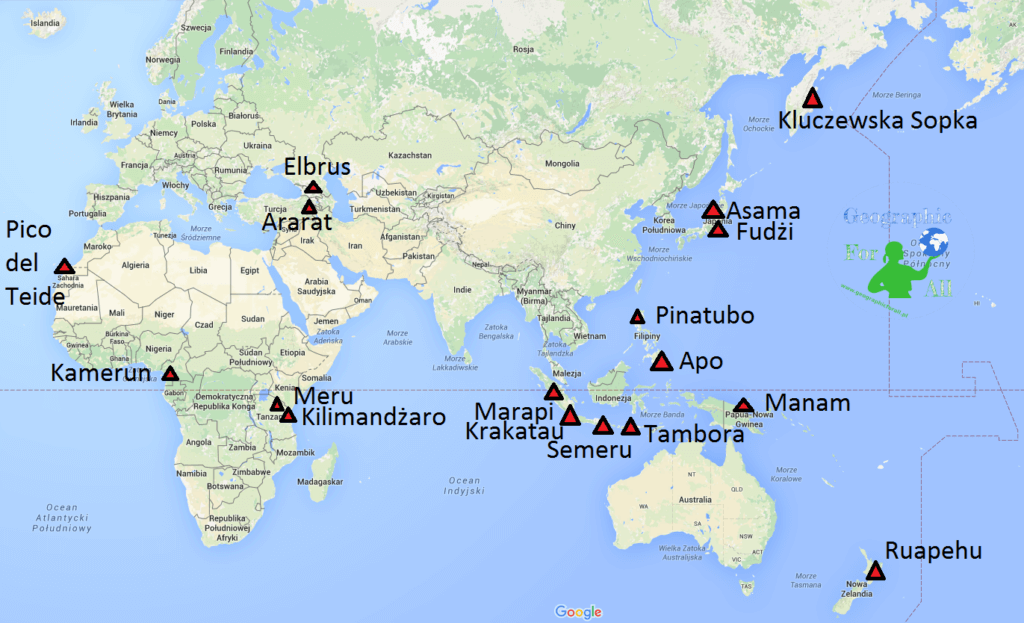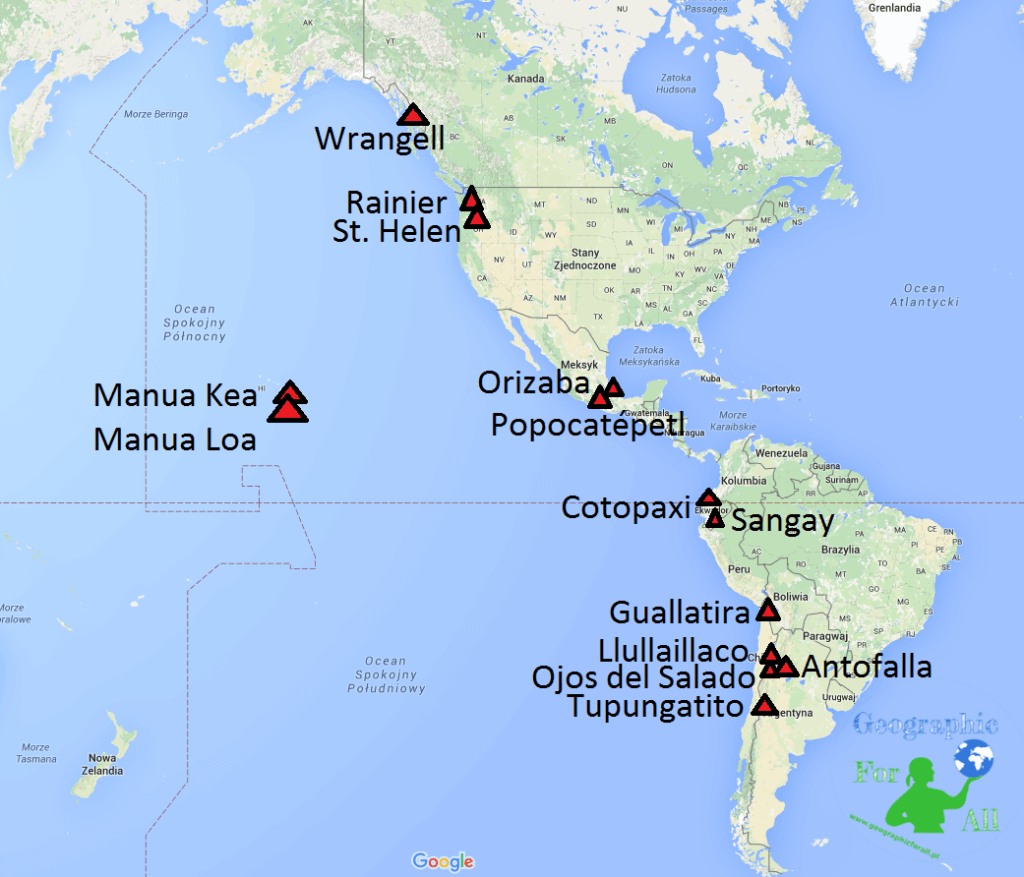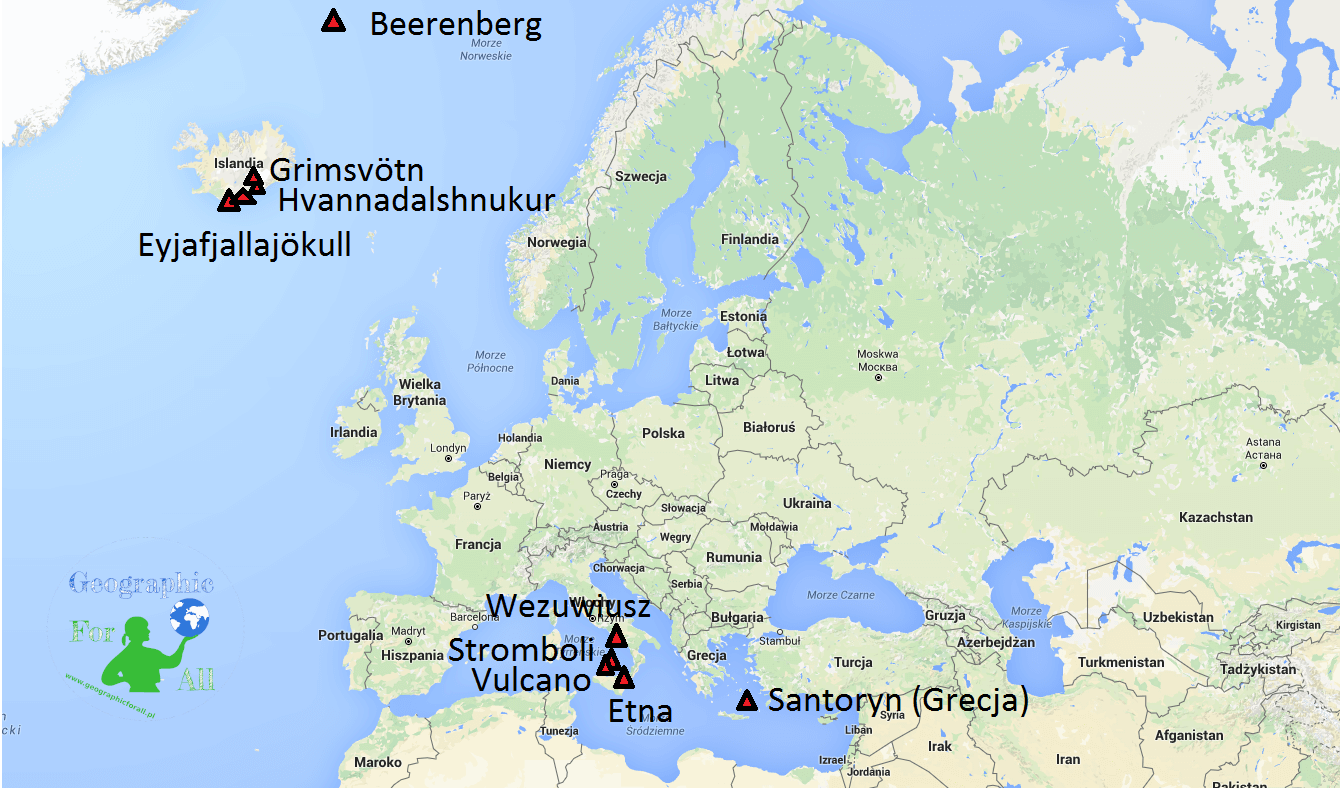You can read about the volcano structure, types of lava and igneous intrusions here.
Types of volcanoes
We generally divide the volcanoes into:
- effusive – lava volcanoes
- explosive – gas volcanoes
- stratovolcanoes – mixed volcanoes
Effusive volcanos (lava volcanoes) have rare basalt (alkaline) lava, little or no cone, and large acreage. They do not throw away pyroclastic materials and gases.
- type Icelandic – linear eruption
- type Hawaiian – central eruption, forms large disc volcanoes, e.g. Manua Kea
Mixed volcanoes mainly have andesite (acidic) lava, but sometimes also partially alkaline. They throw away pyroclastic materials and gases. They form high cones.
- type Strombolian – rhythmic bursts every few minutes, e.g. Stromboli
- type Vulcanian – low frequency of explosions, but due to the crater blocking it gives a lot of bombs and ashes, e.g. Vulcano
- type Vizuvian – the most violent outbreaks, e.g. Vesuvius
Explosive (gas) volcanoes have very dense litholite lava, very high or flat cone due to the destruction of the cone. Eruptions are very violent, they throw out a lot of gases and rocks.
- the Plinia type – when a Vulcan type volcano erupts too violently, e.g. Vesuvius in the times of Herculaneum and Pompeii
- type Peleanian – the lava plug obstructs the crater for a long time, and gases rise below it. During an explosion, the cone, e.g. Mont Pelee in Martinique, is most often destroyed
Arrangement of volcanoes in the world
In Europe, volcanoes are found mainly in Iceland and Italy. High volcanic activity in Iceland is related to its location on the Mid-Atlantic Ridge.
The highest Etna is 3340 m a.s.l.

In Africa, volcanoes are mainly associated with the African Rift area. The highest is obviously Kilimanjaro 5895 m a.s.l.
In Asia and Australia, we have volcanoes in so-called Pacific Ring of Fire at the interface of continental and oceanic plates.

In the Americas, volcanoes are located along the west coast, the Cordilleras and the Andes and in Hawaii. They also fit into the Pacific Ring of Fire associated with plate tectonics.
The highest in North America is the Mexican Orizaba 5700 m a.s.l., in South Ojos del Salado in Chile – 6880 m a.s.l.

Manua Kea is an interesting volcano at all. Apparently only 4205 m above sea level. But if we add 10 203 m from the bottom of the ocean, it turns out that it has a total of 14 408 m. Mount Everest is a small hill next to it 🙂
Interesting facts about volcanoes
- Toba – a volcano that erupted about 75,000 years ago. It is considered to be a supervolcano because dust changed the earth’s climate and persisted for 1800 years. Perhaps his eruption affected the evolution of Homo sapiens. Until 1905, cannibals lived on the island in the middle of the caldera lake. The caldera is in Sumatra.
- Santorini – a volcano which collapsed as a result of an explosion leaving several islands. It was around 1600 BC, the effects were felt in Crete. Identified with the mythical Atlantis.
- Vesuvius – one of two active volcanoes in Europe – the other is Etna. Erupts since antiquity, the last time in 1944. Known for covering Pompeii, Herculaneum and Stabia in 79 CE. together with the residents.
- Tambora – the eruption of this Indonesian volcano in 1815 had global effects, though not long. In the northern hemisphere, 1816 was called „a year without summer,” which in turn resulted in a crop failure. Not to mention the 12,000 victims, 900-1300 km in diameter, circle covered with ashes and tsunami at 10 m.
- Krakatau – between Sumatra and Java. The volcano erupted in 1883, and dust covered 70% of the planet. It is considered one of the largest natural disasters on Earth. After the eruption, three islands were formed, including one on another volcano. He was called „Child Krakatau”, or Anak Krakatau .
- Eyjafjallajokull – an Icelandic volcano that paralysed air traffic across Europe in 2010.
- Pacific Ring of Fire accounts for 90% of active volcanoes and 81% of earthquakes.


0 Comments for “Types and distribution of volcanoes on Earth”